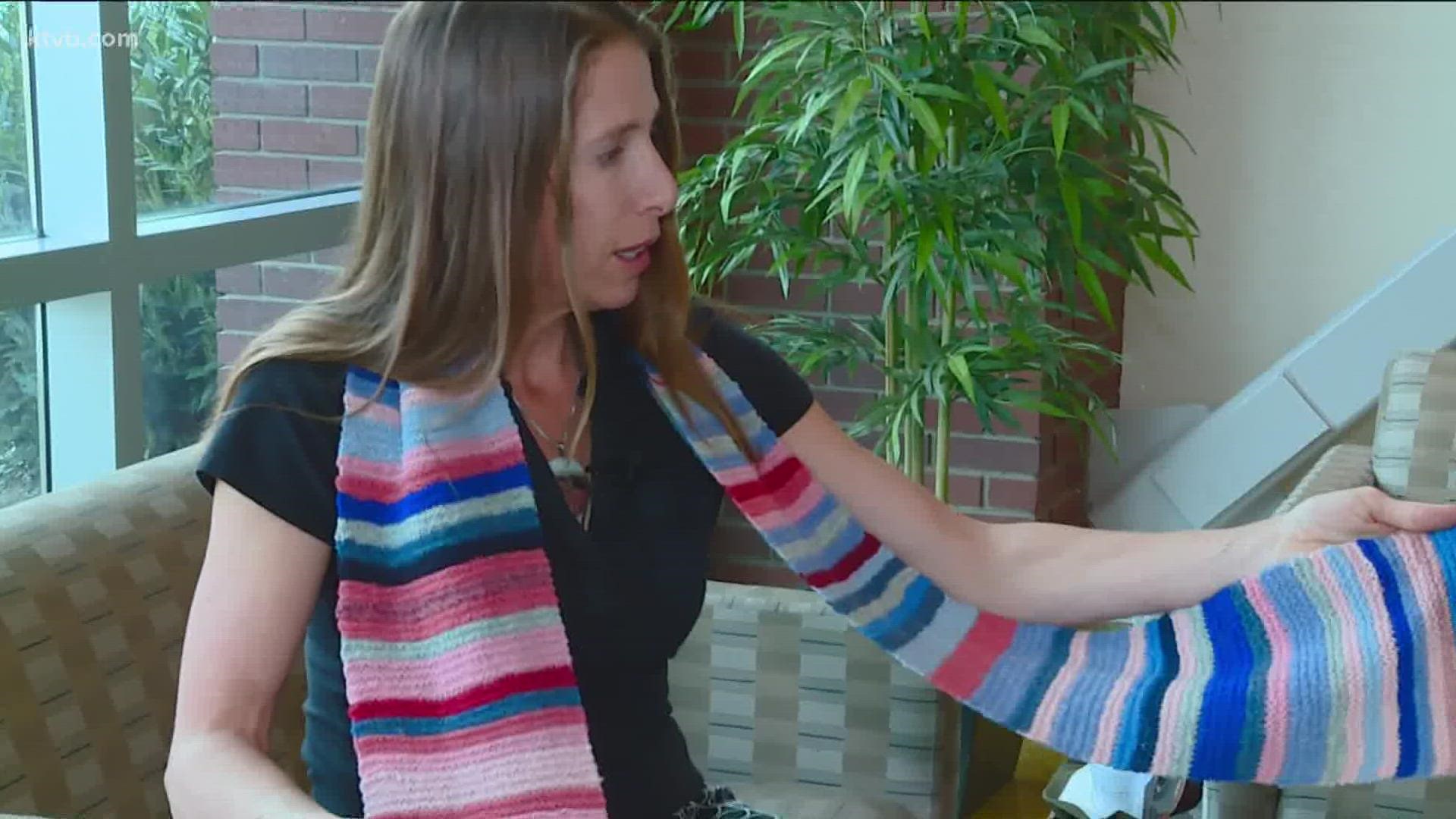BOISE, Idaho — Two Boise State University professors are getting creative in the way they teach climate change.
"It’s all shades of pink and blue and red,” said Karen Viskupic as she looked at a scarf she knitted.
Viskupic is an Assistant Professor in the Department of Geosciences at Boise State. Using climate change color shades from a social-media movement called #showyourstripes, Viskupic decided to make her dear friend and fellow geosciences professor Jennifer Pierce a scarf.
“Karen came in and she said, 'I have a present for you,'" Pierce said.
The scarf represents 126 years of Idaho’s average temperatures. The scarf uses colors to display the climate's increased warmth.
"It’s getting warmer, right, we know that. We can measure it, it’s getting warmer and the scarf just shows that,” Viskupic said.
The scarf displays the annual average temperature in Idaho from 1895 to 2021.
"This is my daughter's lifetime. This is 2012 right here in red to 2021,” Pierce said.
The darker blues represent below-average temperatures for that year. While the pinks and reds show above-average temperatures.
"When she looked at this you know you can count the stripes, I do this with the elementary school kids, and she said, mom, I have only lived in the red,” Pierce said.
The trend is hard to ignore: the darker the red, the warmer the year.
"Of course, we have some years that are a little warmer, a little cooler, wetter, drier, those are shorter changes, but when you look at the overall trend from 1895 and 2021, it's very clear,” Pierce said. “This is not a natural cycle; this is human-caused."
Pierce said she wears the scarf as much as possible, in hopes of it being a conversation starter. The scarf has been on adventures, roaming around to classrooms and lectures in Boise, to Las Vegas at a Geological Society of America meeting, and even to Alaska, for backcountry skiing.
"This is a graph of sorts, but it’s something that everyone can understand that's why I think this is such a powerful tool of communication,” Pierce said.
According to Pierce, starting the discussion about climate change only scratches the surface of what needs to be done to stop it. She said it starts by using renewable energy, from hydro, solar, wind, and geothermal.
“It’s never too late to act and right here in Idaho we have a lot of positive win-win solutions, so let’s focus on those low-hanging fruit. We have geothermal energy here in Boise. We should be heating all of our buildings that we can, building efficiency, that can really reduce our carbon footprint.”
While the vibrant colors may make for a pretty scarf, they hope to not have to add any more red colors to it.
"We need a better planet for my kids for everyone's kids,” Pierce said. "It can’t be too late because we do not have a planet B, this is our only planet."
Join 'The 208' conversation:
- Text us at (208) 321-5614
- E-mail us at the208@ktvb.com
- Join our The 208 Facebook group: https://www.facebook.com/groups/the208KTVB/
- Follow us on Twitter: @the208KTVB or tweet #the208 and #SoIdaho
- Follow us on Instagram: @the208KTVB
- Bookmark our landing page: /the-208
- Still reading this list? We're on YouTube, too:

